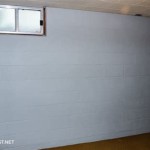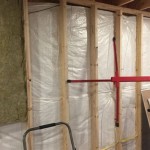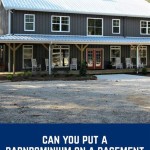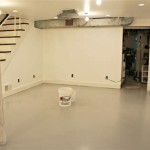How Can I Make My Concrete Basement Floor Look Good?
Concrete basement floors are often viewed as cold, damp, and uninviting. However, with the right approach, they can be transformed into attractive and functional spaces. Several options exist for improving the appearance and usability of a concrete basement floor, ranging from simple DIY projects to more involved professional installations.
Painting
Painting is one of the most cost-effective ways to enhance a concrete basement floor. Specialized concrete floor paints are designed to withstand the moisture and alkalinity often present in basements. These paints typically come in epoxy or latex formulations, offering varying degrees of durability and resistance to chemicals and abrasion. Proper surface preparation, including cleaning and patching any cracks, is crucial for successful paint adhesion and a long-lasting finish.
Staining
Concrete staining offers a unique aesthetic, allowing the natural variations in the concrete to show through while adding color and depth. Acid-based stains react chemically with the concrete, creating a mottled, variegated effect. Water-based stains offer a wider range of color options and are generally easier to apply. Like painting, proper surface preparation is essential for achieving optimal results with concrete stains.
Epoxy Coatings
Epoxy coatings provide a durable, high-gloss finish that is resistant to moisture, chemicals, and abrasion. They are an excellent choice for basement floors that will experience heavy traffic or potential spills. Epoxy coatings are available in a variety of colors and can even be used to create decorative effects, such as metallic finishes or chip patterns. Professional installation is often recommended for epoxy coatings due to the specific surface preparation and application requirements.
Concrete Polishing
Concrete polishing involves grinding down the surface of the concrete using progressively finer diamond abrasives to achieve a smooth, high-gloss finish. This process can expose the aggregate within the concrete, creating a unique and attractive terrazzo-like appearance. Polished concrete is highly durable, easy to clean, and requires minimal maintenance. It’s also an environmentally friendly option, as it eliminates the need for additional flooring materials.
Rubber Flooring
Rubber flooring provides a comfortable, resilient surface that is ideal for basement gyms, playrooms, or workshops. It is available in tiles, rolls, or interlocking mats, offering flexibility in installation and design. Rubber flooring is durable, water-resistant, and provides excellent sound insulation. It also offers a degree of cushioning, making it more comfortable to stand on for extended periods.
Carpet Tiles
Carpet tiles offer a versatile and relatively inexpensive way to add warmth and comfort to a basement floor. They are easy to install and replace, making them a practical choice for basements prone to moisture issues. Carpet tiles are available in a wide variety of colors, textures, and patterns, allowing for customization and design flexibility. They also provide sound insulation and can help to improve the overall acoustics of the basement space.
Interlocking Tile Systems
Interlocking tile systems, often made of plastic or rubber, provide a quick and easy way to cover a concrete basement floor. These tiles are designed to snap together, creating a seamless surface without the need for adhesives. They are available in various colors and textures, allowing for customization and design versatility. Interlocking tile systems are particularly well-suited for basements prone to moisture, as they can be easily removed and dried if necessary.
Area Rugs
Area rugs offer a simple and affordable way to add warmth, color, and texture to a concrete basement floor. They can be used to define specific areas within the basement, such as a seating area or a play space. Area rugs are available in a wide range of sizes, styles, and materials, making it easy to find options that complement the overall aesthetic of the basement. They also provide insulation and can help to reduce noise levels.
Subfloors
Installing a subfloor over the concrete can create a more comfortable and finished look. Various subfloor options exist, including plywood, oriented strand board (OSB), and foam insulation panels. A subfloor can provide a level surface for installing finished flooring materials such as carpet, laminate, or engineered wood. It also adds insulation, which can help to improve the energy efficiency of the basement space and reduce moisture issues.

How To Stain Concrete Basement Floor Diy Guide

15 Diy Basement Flooring Ideas Affordable Options For Basements

Polished Concrete Flooring Options For Your Basement Duraamen

Basement Floor Options Making Your Concrete Look Great

6 Concrete Floor Covering Options Ideas Network

Diy Concrete Floor Cheap Home Diys Design Mom

Concrete Floors That Look Like Marble With Acid Stain

How To Paint A Concrete Floor Southern Hospitality

10 Ideas For Basement Flooring

Stained Concrete Basement Floor Ideas
See Also








